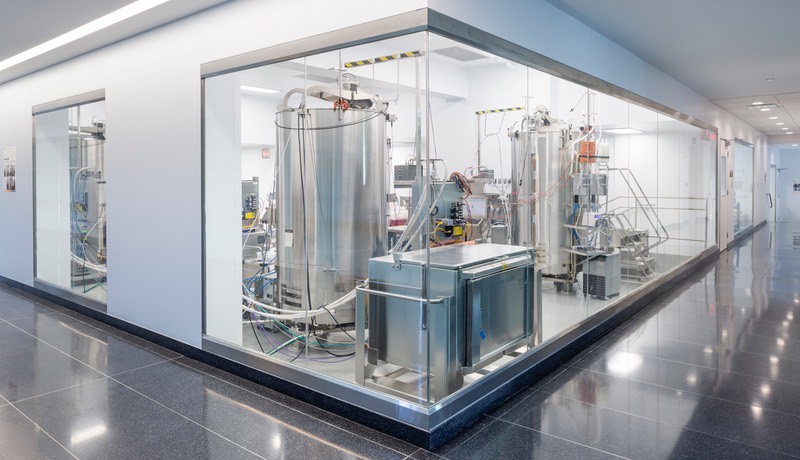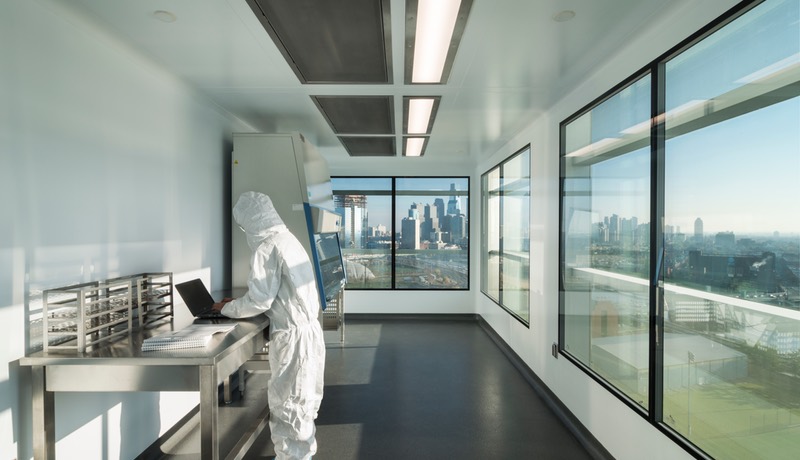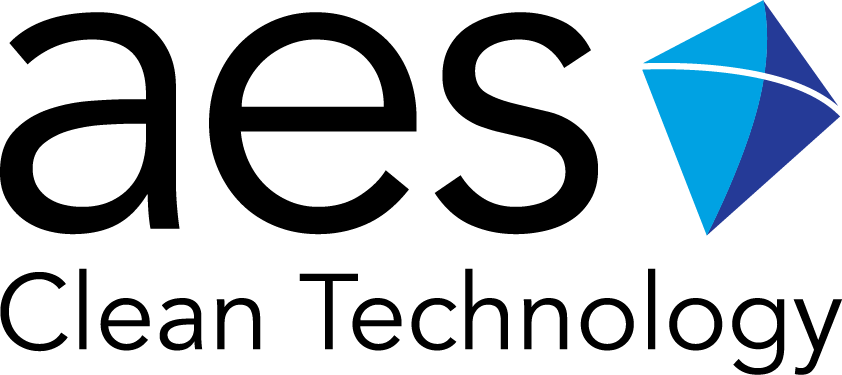Grant Merrill took the reins of AES Clean Technology last March after serving 18 years in the company as Director of Project Development. The promotion, a milestone in his 25-year career, set off my curiosity: it coincided with the arrival of a private investor who acquired the 100% equity stock of the business.
I was intrigued by what Merrill had to say about AES market share, the new ownership, and “the game-changer” component the company promised to unveil at Interphex 2019. With a couple of emails back and forth he agrees to talk, and in the relative calm that followed the trade show in New York, Merrill finds time to go through my questions. In return, he describes the evolving face of the business, dissects the buzzwords of the industry, and explains what makes the company stand out in the ever-growing offer of modular cleanroom construction. “We are the only US-based company that designs, manufactures, and installs cleanrooms with all in-house capabilities,” he tells me.
It all started in 1986 when Cliff and Rob Satterfield founded the company as Air Energy Systems (AES) to solely focus on the design and build of cleanrooms. Operating out of its Montgomeryville headquarters in Pennsylvania, the sibling-run company matured as a turnkey solutions provider through acquisitions.
In 2002 it acquired the US assets of MSS cleanroom system, the British maker of cleanroom walls, ceilings and fittings, and rebranded AES Clean Technology, Inc. Ten years later, Unified Building Systems, the company's installations partner in the US, is brought into the fold.
We recently completed two concurrent 100,000 sqft cleanrooms in Ireland. Our North American clients take us with them to other portions of the globe
For Merrill, the acquisition came to consolidate the organic growth and stability AES has achieved to date. "2018 was a banner year for AES, and in the past decade we have more than doubled our business," he says. Merrill is reluctant to disclose financials but tells me that AES has grown from few local contracts per year to 100-plus projects across multiple countries and regions. “We recently completed two concurrent 100,000 sqft cleanrooms in Ireland. Our North American clients know that our cleanrooms are second to none, and they take us with them to other portions of the globe to provide consistency of project delivery,” he enthuses.
Laser-focused on building cleanrooms for (bio)pharma and medical device applications, AES has made a name for itself in the cleanroom build market with big-ticket projects for clients the like of Catalent, Dendreon and Sanaria, not to mention the first FDA-approved CAR-T therapy cleanroom for the Novartis-Penn Center, built in Philadelphia three years ago.
Merrill is adamant WJFS will continue to invest in and grow the company, both domestically and internationally, and provide progression for employees and management. "With the backing of a strong investment firm that believes in making a positive impact on the lives of patients around the world, we will be able to grow and innovate as the marketplace continues to evolve," he says.

Cleanroom facility with AES Infinity wall
Making it work
A mechanical engineer, Merrill focused his studies at Cornell University on fluid mechanics and heat transfer. “I have always been fascinated by the way things work. At a young age, I knew that science and technology would be my path; I felt strongly that my skills would be best utilised blending business with science,” he tells me.
Before joining AES in 2001, Merrill worked seven years at Trane, the HVAC company, as an engineer integrating high-performance air conditioning systems into mission-critical projects. “AES was a priority client of mine during that early part of my career. I assisted in the development of its cleanroom mechanical systems, so I have been involved with the AES business for my entire professional life,” he confesses.
AES has delivered turnkey cleanroom facility solutions from the onset, but Merrill tells me that what has evolved is the proportion of the process delivered within the four walls of the company. “We have been successful at integrating architecture, HVAC, and utility infrastructure to deliver a cleanroom with guaranteed compliance for over 30 years,” he says.
AES was a priority client of mine during that early part of my career. I assisted in the development of its cleanroom mechanical systems.
Merrill believes the ability to control all facets of the design, manufacture, and build process has set AES apart. He explains: “Because we manufacture a modular architectural product that is specified by our clients, we can tailor our services on projects that involve architect/engineer (AE) and construction management (CM) firms where the client team requires our cleanroom enclosure. We call that our ‘box’ strategy (...) we bring all of our technical knowledge to bear on the project. Ultimately, we respect our AE and CM partners by tailoring a solution of components and services while still maintaining our single-minded focus of a compliant cleanroom facility.”
Fittings, ceilings, walls and other components that go into AES modular systems are made in Suwanee, Georgia, some 750 miles (1,200 km) southwest of the corporate HQ. A modern manufacturing facility, the site features two production lines that can run two shifts. Operating since 2008, the 80,000-sqft factory provides AES with the capacity to handle large and small projects for clients all over the world.
Fast and effective
Elaborating on the main changes he has seen over the years, Merrill says: “Speed to market is the number one driver in the pharmaceutical and biotechnology industry today. Project schedules are more demanding than ever, and the regulations are stricter than ever. The faster our clients can build facilities, the quicker they can get treatments into the hands of the patients who need them the most. AES has heard that message loud and clear from the marketplace. Rapid design-build solutions are at the forefront of our firm’s philosophy and execution strategy.”
Turnkey delivery is the other evolving concept Merrill has witnessed; he believes such a capacity is essential to minimise risk for clients. “A cleanroom facility is not merely a wall, a ceiling or a filtration system but a complete functioning asset that guarantees the environmental conditions necessary for critical processing to take place,” Merrill explains. “The moment you break apart a system into its parts, you introduce risk into the network. Our clients rely on us as a professional integrator who absorbs the risk of the facility deployment; not only the architectural finishes but the critical mechanical systems that ensure compliance of environmental performance.”
Admitting modular is today's industry buzzword, Merrill says the concept means different things to different people. “This year at Interphex we saw modular wall and ceiling manufacturers and several cleanroom integrators, but we don’t view them as true equals to what we do,” he says.
Imagine legos that can be deployed in a flexible, adaptable, and rapid manner to construct a critical facility within an ever-changing landscape of client requirements
For Merrill, AES delivers cleanrooms through a method called pre-engineered modular construction, which features modular components that are factory-fabricated but built one time on the client’s site. He explains: “Imagine legos that can be deployed in a flexible, adaptable, and rapid manner to construct a critical facility within an ever-changing landscape of client requirements. These legos can be reconfigured for each client but easily snap together onsite and provide a consistent fit and finish.”
In a crowded market, AES has integrated its architectural system into many projects with three-dimensional module providers. Commenting on working with competitors, Merrill says: “When a facility is fully built offsite and then shipped in three dimensions to the client’s location, a modular architectural ‘inside’ is preferable to withstand the rigours of travel in a fully assembled state. When a project is a hybrid combination of fully built modules and site-built infrastructure, AES is often integrated into both conditions.” Merrill tells me the company has intentionally made its modular systems a middle ground between the opposite extremes.
“This middle ground of pre-engineered modular construction allows us to realise the benefits of both. We leverage the benefits of quality, schedule, and predictability from modular technology while at the same time leverage the benefits of cost, flexibility, and adaptability of site-built construction,” he says.

The facility for Penn Medicine developed by AES features 6,300 sqft of cleanroom space for cell engineering
Room for innovation
Merrill admits that clients are risk-averse and often choose a conventional path to ensure that their facility investment will meet the expectations of the regulators. “Many of our clients are building flexible facilities that can manufacture several different products that are being developed through clinical trials. Innovation within the facility is focused on flexibility for late change, adaptability for alternate or multiple products, and speed of completion once clinical outcomes are known,” he explains. For Merrill, AES business model intends to de-risk the facility portion of the project so clients can focus on what they do best. “We focus on creating a compliant facility that allows science to flourish,” he says.
Merrill confesses that “game-changing” cleanroom components, the concept showcased at Interphex 2019, is the brainchild of a client who coined the phrase “AES game-changers” when discussing the impact its products made on a project. He explains: “We borrowed that phrase for the presentation at Interphex as we introduced several new products designed to change the way facilities are executed.”
Without revealing details, Merrill says the company integrated new components on a fast-track project in California. The utilisation of those components changed the game by shaving weeks off of the construction timeline. “Our product development intends to stay focused on our clients’ goals of speed, quality, and minimise risk," he says.
AES’ latest products include Omni, a pre-piped and pre-wired utility raceway that integrates directly into the AES wall system to eliminate the need for site construction of utility distribution into the cleanroom. And Litebeam, an LED linear light fixture that integrates directly into the AES ceiling system. Merrill tells me that using these propriety products delivers speed, safer construction, easy commissioning, lower cost, reduce space, and increase ceiling strength.
Team spirit
“I believe AES has not only the best modular solutions in the market but more importantly, the strongest team in the industry,” Merrill enthuses, as he tells me about new products in development, growth plans, and initiatives to attract and retain the best talent in the marketplace.
For Merrill, 2019 is shaping up to be a great year for our company. “We are being entrusted with the development of critical facilities for companies small and large, close and far away. We are not at liberty to share project specifics until these facilities launch into the marketplace, but suffice it to say 2019 will include new clients who have not worked with us in the past, existing clients who have worked with us for nearly 30 years, and many in between,” he concludes.
Since the WJFS acquisition, the company has expanded staff and welcomed industry veteran, Tim Kennedy, as Chief Financial Officer, and Josh Russell as Director of Project Development. The challenge now is for Merrill and his team to realise the company's goals
N.B. This article is featured in the May 2019 issue of Cleanroom Technology. The digital edition is available online.

